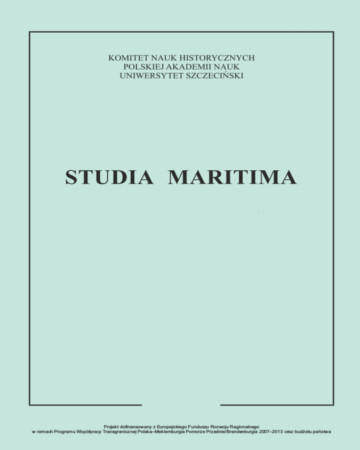






| Authors: |
Eugeniusz Cezary
Król
Instytut Studiów Politycznych PAN (Warszawa) |
| Keywords: | geopolitics the Third Reich |
| Data publikacji całości: | 2016 |
| Page range: | 27 (141-167) |
| 1. | Hitler A., Mein Kampf , 22 wyd., München 1944. |
| 2. | Kjellén R., Der Staat als Lebensform, Leipzig 1917. |
| 3. | Mahan A.T., The Influence of Sea Power Upon History 1600–1783, Boston 1890; wyd.polskie: Wpływ potęgi morskiej na historię 1660–1783, tłum. E. Weryk, Oświęcim 2013. |
| 4. | Mahan A.T., The Influence of Sea Power Upon French Revolution and Empire 1793– 1812, Boston 1892. |
| 5. | Naumann F., Mitteleuropa, Berlin 1915. |
| 6. | Ratzel F., Politische Geographie, München 1987. |
| 7. | Schmitt C., Völkerrechtliche Grossraumordnung mit Interventionsverbot für raumfremden Mächte. Ein Beitrag zum Reichsbegriff im Völkerrecht, Berlin 1939. |
| 8. | Akten zur Deutschen Auswärtigen Politik, Serie D, Bd. 1, Baden-Baden 1950. |
| 9. | Das Diensttagebuch des deutschen Generalgouverneurs in Polen 1939–1945, oprac. W. Präg, W. Jacobmeyer, Stuttgart 1975. |
| 10. | Goebbels J., Dzienniki, t. 2: 1939–1943, wybór, tłum., wstęp i przypisy E.C. Król, Warszawa 2013. |
| 11. | Hitler. Sämtliche Aufzeichnungen. 1905–1924, red. E. Jäckel, A. Kuhn, Stuttgart 1980. |
| 12. | Hitlers Zweites Buch. Ein Dokument aus dem Jahre 1928, wstęp, kom. G.L. Weinberg, przedmowa H. Rothfels, Stuttgart 1961. |
| 13. | Hoßbach F., Zwischen Wehrmacht und Hitler 1934–1938, Göttingen 1965. |
| 14. | Michalka W., Deutsche Geschichte 1933–1945. Dokumente zur Innen- und Außenpolitik, Frankfurt/M. 1999. |
| 15. | Picker H., Hitlers Tischgespräche im Führerhauptquartier. Vollständig überarbeitete und erweiterte Neuausgabe mit bisher unbekannten Selbstzeugnissen Adolf Hitlers, |
| 16. | Abbildungen, Augenzeugenberichten und Erläuterungen des Autors. Hitler, wie er wirklich war, Stuttgart 1977. |
| 17. | Rauschning H., Rozmowy z Hitlerem, Warszawa 1994. |
| 18. | Treue W., Hitlers Denkschrift zum Vierjahresplan 1936, „Vierteljahrshefte für Zeitgeschichte”, 1955, z. 2. |
| 19. | Vogelsang T., Neue Dokumente zur Geschichte der Reichswehr 1930–1933, „Vierteljahrshefte für Zeitgeschichte” 1954, z. 4. |
| 20. | Bendersky J.J., Carl Schmitt. Theorist for the Reich, Princeton 1983. |
| 21. | Smith B.F., Die Überlieferung der Hoßbach-Niederschrift im Lichte neuer Quellen, „Vierteljahrshefte für Zeitgeschichte” 1990, z. 2. |
| 22. | Chodorowski J., Niemiecka doktryna gospodarki wielkiego obszaru (Grossraumwirtschaft) 1800–1945, Wrocław 1972. |
| 23. | Gruchmann L., Nationalsozialistische Grossraumordnung. Die Konstruktion einer „deutschen Monroe-Doktrin“, Stuttgart 1962. |
| 24. | Jäckel E., Hitlera pogląd na świat, Warszawa 1973. |
| 25. | Macała J., Blok kontynentalny Karla Haushofera, „Geopolityka” 2009, nr 2 (3). |
| 26. | Petzina D., Autarkiepolitik im Dritten Reich: Der nationalsozialistische Vierteljahresplan, München 2011. |
| 27. | Tomasiewicz J., Brunatna Europa, „Fronda” 2001, nr 25–26. |
| 28. | Volkmann H.-E., Die NS-Wirtschaft in Vorbereitung des Krieges, w: Ursachen und Voraussetzungen des Zweiten Weltkrieges, Frankfurt/M. 1989. |
| 29. | Wolff-Powęska A., Doktryna geopolityki w Niemczech, Poznań 1979. |